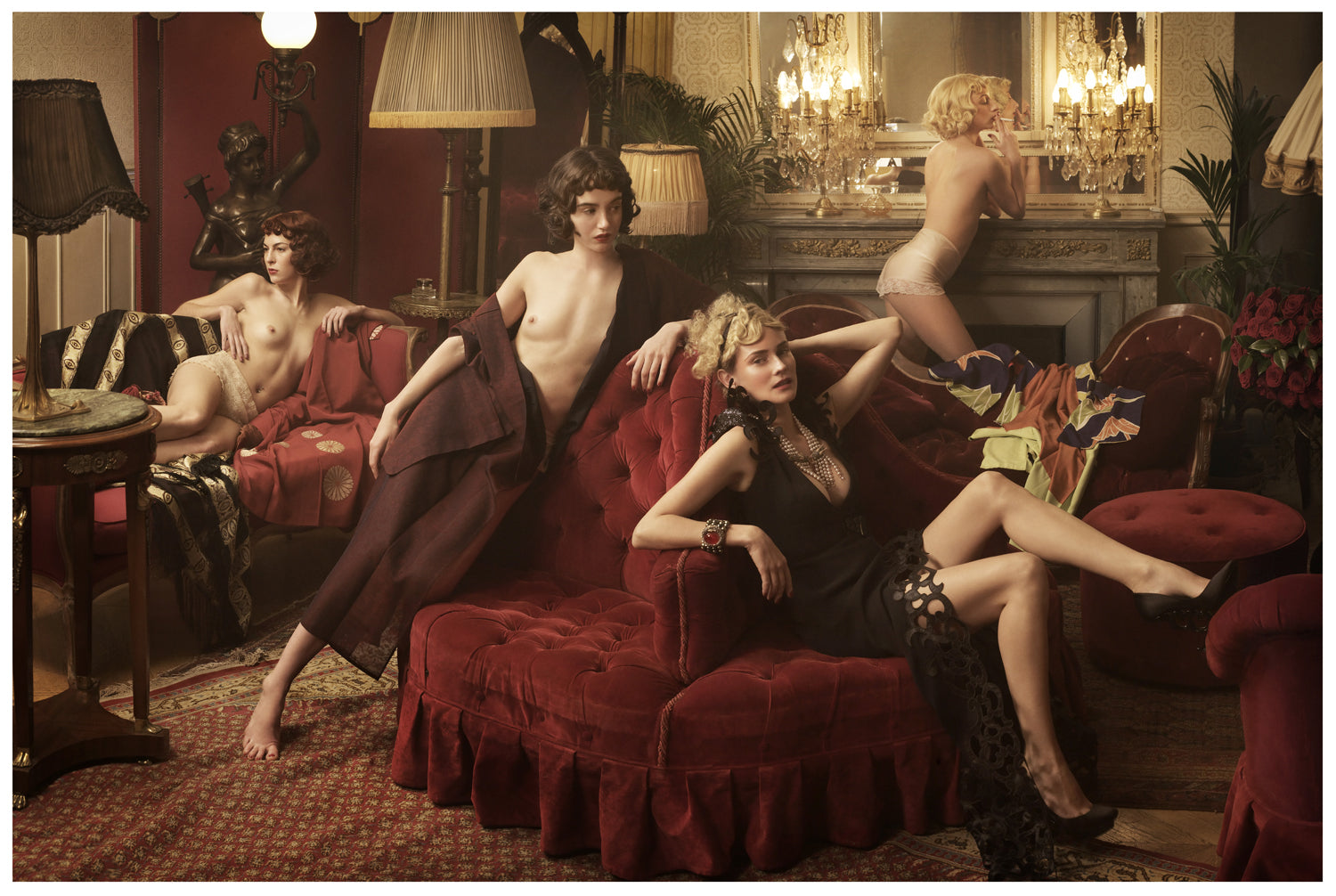Detaljernas djävul
Med teknisk perfektion och dygdig ljussättning avgör stillebenfotografen Frederik Lieberath hur vi ser på våra vardagliga föremål.
ORD: OSKAR HAMMARKRANTZ, FOTO: FREDERIK LIEBERATH
”Om man tittar på något tillräckligt länge blir det tråkigt. Men om man tittar ännu längre och närmare kan något intressant hända.” Denna observation gjordes av den hyllade ryske filmskaparen Andrej Tarkovskij. Den kan beskrivas som en vägledande referenspunkt eller arbetsfilosofi för den världsberömde svenske stillebenfotografen Frederik Lieberath.
”Jag strävar efter att göra produkten rättvisa, att visa hur den känns och hitta det bästa sättet att representera den.”
Denna metod har lett till att Lieberath har arbetat för några av de mest prestigefyllda globala varumärkena, inklusive Armani, Omega, Samsung, Viktor & Rolf, Apple, Capellini, Asprey, Bentley och många andra. När ett varumärke lanserar en ny produkt och vill ha bilder som sticker ut, är det Lieberath som ska ringas. Han frammanar symbolik, så som produkttillverkaren vill att den ska uppfattas.
När Lieberaths intresse för fotografi började växa i sena tonåren gav hans farbror honom två böcker. Den ena innehöll Bill Brandts råa, svartvita fotojournalistik, och den andra visade upp Irving Penns mästerverk av stilleben. Det var den senare som blev en grundläggande referens för Lieberaths karriär och fotografiska vision.
Lieberath fortsatte att studera konsthistoria vid Lunds universitet. Om man tittar noga på hans bilder kan man urskilja spår av de första stillebenmålarna från 1500- och 1600-talens Nederländer, såväl som inslag av Irving Penns 1900-talstolkningar av kompositionerna.
”Jag har alltid haft ett starkt intresse för bilder och tillbringat många timmar på museer över hela världen. Så jag har naturligtvis lärt mig lika mycket från måleri och konsthistoria som från samtida fotografi”, förklarar han.
Som ung man arbetade Lieberath även som fotografassistent i Köpenhamn, och fotograferade mestadels ölglas för ett av Danmarks största bryggerier – ”Det var då jag verkligen lärde mig ljussättningstekniker”, säger han leende.
I slutet av åttiotalet började Lieberath sina studier på fotoprogrammet på Konstfack i Stockholm, där han introducerades till postmodern teori, vilket blev grunden för hans analytiska och akademiska förhållningssätt till fotografi. ”De andra studenterna ville gå ut och göra andra saker, så jag hade ateljén nästan för mig själv”, minns han.
Han började arbeta för svenska mode- och livsstilstidningar där han ofta fotograferade parfymflaskor och liknande varor, innan han flyttade till New York 1993, där hans verkliga genombrott kom med redaktionella uppdrag för Harper's Bazaar. Andra uppmärksammade uppdrag följde snart för tidningar som Vogue, Elle, Velvet och Amica.
"Jag vill tillbringa så mycket tid som möjligt med ett föremål."
De tekniska färdigheter han uppnådde när han assisterade vid fotograferingar av ölglas utvecklades ytterligare när Lieberath började få kommersiella uppdrag.
Om du tittar på en officiell reklambild av en Apple-produkt, en iPhone eller iPad eller något annat, kommer du snart att känna igen den tydliga visualiseringen av produkten med en typisk excentrisk diagonal skugga på skärmen. Ett signaturresultat av Frederik Lieberaths ljussättning och tekniska briljans.
”När Apple skulle introducera den första iPoden år 2001 bad de mig och två andra fotografer att komma och ta några bilder. Det var nästan som en audition. Jag gjorde min grej och åkte sedan tillbaka till Stockholm och tänkte att det var allt”, minns han.
Ett par veckor senare bad Apples marknadsföringsavdelning i Kalifornien Lieberath att komma tillbaka och ta de riktiga bilderna. De förklarade att de gillade renheten och renheten i hans bilder, och det visade sig vara början på ett bestående samarbete.
Några av Lieberaths mest intressanta verk inkluderar dock inte prestigefyllda varumärken eller ikoniska föremål. Ett exempel är en serie bilder av vanligt brevpapper arrangerade i perfekta geometriska kompositioner, vilket skapar ett nästan arkitektoniskt intryck.
I ett annat projekt undersöker Lieberath vad som egentligen händer i den millisekunden som en ballong spricker. ”Jag ville skriva en bildtext till det exakta ögonblicket när en fysisk struktur förvandlas”, säger han och tillägger: ”Inledningsvis var detta tänkt som ett redaktionellt uppdrag, där vi visade upp accessoarer och smycken, men i slutändan blev bilderna av de sprickande ballongerna mer intressanta än själva accessoarerna.”
En av Lieberaths vackraste serier avbildar smådjur konserverade i formalin (mättad lösning av formaldehyd i vatten) som ursprungligen samlades in av assistenter till den svenske botanisten och zoologen Carl von Linné, av vilka några dateras tillbaka till mitten av 1700-talet. Bilderna, som beställdes som ett uppdrag för en svensk papperstillverkare, framstår idag som fascinerande konstverk i sig själva.
Oavsett produkt eller föremål har Lieberath en viss förmåga att framhäva och accentuera materialens taktila egenskaper. Observatören kan nästan uppfatta känslan av kall metall, grovt läder eller de lenaste ädelstenar.
"Jag vill tillbringa så mycket tid som möjligt med ett objekt. Att kunna vända det, observera det från olika vinklar och slutligen hitta kärnan, den ultimata detaljen som kan framstå som symbolen för objektet."










